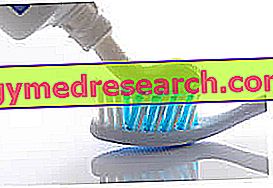Definition
Hemorrhagic cystitis is defined as a clinical picture characterized by an inflammatory process - sometimes infective - at the level of the bladder mucosa, associated with a macroscopic hematuria; more often than not, hemorrhagic cystitis reflects a traumatic event affecting the bladder (eg chemotherapy) or the administration of a toxic substance.
- Pathogens - radiation - drugs → Injury to the transitional epithelium of the bladder and underlying blood vessels → hemorrhagic cystitis
Causes
It is not uncommon for hemorrhagic cystitis to be an expression of systemic or localized inflammation, sustained by bacteria (E. coli, S. saprophyticus, Klebsiella, Pseudomonas, etc. ), viruses ( Adenovirus, influenza A and Cytomegalovirus) or mycetes (more rare); however, this variant of cystitis has been found in hemorrhagic diathesis, generalized sepsis and in some syndromes. So-called "sterile" hemorrhagic cystitis is an expression of non-infectious lesions, such as radiotherapy and chemotherapy.
- Risk factors: AIDS, kidney stones (rare), urinary catheter, diabetes, gonorrhea, incorrect intimate hygiene, risky sexual intercourse, bladder tumors (rare), use of the diaphragm and spermicides, exaggerated use of intravaginal swabs.
Symptoms
In the context of hemorrhagic cystitis, lesions affecting the bladder wall take the form of inflammatory phenomena associated with more or less serious hemorrhagic lesions. In general, the affected patient always complains of blood in the urine (hematuria), possibly associated with dysuria, suprapubic pain, pollakiuria, stranguria, bladder tenesmus.
Information on Hemorrhagic Cystitis - Drugs for the Treatment of Hemorrhagic Cystitis are not intended to replace the direct relationship between health professional and patient. Always consult your doctor and / or specialist before taking Hemorrhagic Cystitis - Drugs for Hemorrhagic Cystitis Treatment.
drugs
Treatment for hemorrhagic cystitis depends on the underlying cause: when the disease is triggered by a bacterial insult, antibiotic drugs are the excellent therapy. It is possible to choose broad-spectrum antibiotics if the pathogen responsible for hemorrhagic cystitis had not yet been identified with certainty; if the bacterium is isolated, the doctor will indicate a specific antibiotic. Affectionate speech for haemorrhagic cystitis sustained by viruses and fungi: the former are eradicated with the administration of specific antivirals, while the fungi are killed with antifungals.
As we have analyzed, hemorrhagic cystitis can also be of an extra-infective nature, and depend on radiation, antineoplastic drugs or congenital malformations.
It is estimated that 5-30% of patients treated with cyclophosphamide or ifosfamide develop bladder damage such as haemorrhagic cystitis: in order to avoid this inconvenience, it is recommended to undertake a specific therapy aimed at PREVENTING haemorrhagic cystitis (the topic will be deepened in article course).
Other possible therapeutic strategies to reduce the symptoms of hemorrhagic cystitis include:
- placement of a bladder catheter
- antispastic and pain-relieving therapy
- support with blood products
- forced diuresis (with furosemide)
- systemic hyperhydration (with solutions of glucose or physiological solution)
- alkalinization of urine
- bladder wash (useful in case of obstruction of the bladder catheter from clots)
Antibiotic therapy for the treatment of bacterial hemorrhagic cystitis
- Imipenem (eg. Imecitin, Tienam, Tenacid): the drug (class: beta-lactam antibiotics): it is used in therapy for the treatment of bacterial cystitis supported by Klebsiella and Pseudomonas. The active ingredient should be taken intramuscularly at a dose of 500-750 mg every 12 hours; alternatively, take the drug intravenously at a dosage of 1-2 grams per day.
- Third-generation cephalosporins (eg Cefotaxima: Cefotaxima, Aximad, Lirgosin, Lexor). The drug is used in therapy for the treatment of bacterial cystitis supported by Klebsiella and pseudomonas. The dosage must be indicated by the doctor. Generally, the treatment should be continued for 7-10 days.
- Ofloxacin (eg. Exocin, Oflocin): in case of hemorrhagic cystitis, take 200 mg of active ingredient every 12 hours for 3 days (in case of infection with E. Coli and Klebsiella and Pneumoniae) or 7 days (for hemorrhagic cystitis due to other bacteria). The posology can possibly be modified in case of exacerbation of symptoms.
- Piperacillin (eg Limerik, Picillin, Ecosette): the drug is a semi-synthetic penicillin, with a broad spectrum of action, indicated for bacterial infections in the context of hemorrhagic cystitis (species supported by Pseudomonas aeruginosa, Klebsiella, Enterobacter, Escherichia coli, Neisseria gonorrhoeae etc.). Indicatively, take a dose varying from 125 to 200 mg / kg of drug per day intravenously, in divided doses every 6-8 hours, for 7-10 days.
Antispastic therapy for hemorrhagic cystitis
- Scopolamine butylbromide (eg Buscopan, Addofix, Erion): it is recommended to take a dose of drug equal to 0.3-0.4 mg / kg per dose, to be repeated 2-3 times a day. The drug is indicated for the treatment of painful bladder spasms.
- Oxibutinin or oxybutynin (eg Ditropan, Kentera): for patients over 5 years of age, it is recommended to take a dose of 5 mg twice a day. Discontinue therapy at least 24 hours prior to removal of the bladder catheter, in order to facilitate full resumption of detrusor muscle contractility.
Analgesic drugs for the control of pain associated with hemorrhagic cystitis
The drug most indicated for this purpose is an opioid derivative, Tramadol (eg Tralenil, Tramadolo, Fortradol, Contramal): it is recommended to take an active dose of 1-2 mg / kg per day, as needed. Do not exceed 4 doses per day, corresponding to 400 mg / day.
Support therapy with blood products for hemorrhagic cystitis
In case of need for blood products, it is essential to maintain Hb (hemoglobin) levels> 9g / dl, with infusion of red blood cells filtered at a dose of 10 mg / kg.
Platelet levels should not fall below 50, 000 units / µl in order to ensure effective hemostasis. If necessary, proceed with a fresh plasma support, at a dose of 10 ml / kg.
Medications to promote diuresis
Forced diuresis is another possible alternative or completion therapy in the context of hemorrhagic cystitis. The most indicated drug for this purpose is furosemide (eg Lasix, Spirofur): the suggested dose for the treatment of hemorrhagic cystitis varies from 0.5 to 1 mg / kg, to be taken intravenously. This dose is indicated if the ratio of the fluids taken on to those eliminated is 75% lower.
Systemic hyperhydration in case of hemorrhagic cystitis
Systemic hyperhydration in the context of hemorrhagic cystitis is carried out with:
- 0.9% physiological solution
- 5% glucose solution
In general, the suitable amount of solution varies from 2, 000 to 3, 000 ml / m2 in 24 hours. Do not exceed 4000 ml / m2 per day.
The goal of this therapy is to minimize the fatigue of the bladder detrusor muscle, while limiting, at the same time, the permanence of the urine in contact with the injured mucosa.
Alkalinization of urine for the treatment of hemorrhagic cystitis
The alkalinization of urine is an effective method for the PREVENTION of hemorrhagic cystitis in the context of chemotherapy treatments (intake of methotrexate, cyclophosphamide and isophosphamide). Sodium bicarbonate (eg Sob B BIN) is one of the most widely used drugs for this purpose. The dosage must be carefully determined by the doctor, based on the patient's condition.
To antagonize the toxicity effect of methotrexate (eg Reumaflex, Methotrexate HSP, Securact), it is advisable to alkalinize urine in combination with folic acid intake, as methotrexate is an antagonist of vitamin B9.
Preventive therapy for hemorrhagic cystitis in cancer patients
Some patients receiving chemotherapy for the treatment of neoplasms are advised to use certain drugs to prevent hemorrhagic cystitis: antineoplastic drugs containing cyclophosphamide (eg Endoxan Baxter, bottle or tablets) or ifosfamide (eg Holoxan), in fact, they seem to exaggeratedly increase the risk of causing hemorrhagic cystitis to those who take them. The dose-limiting toxicity of isofosfamide occurs mainly in the bladder and renal level.
In such circumstances, it is recommended to administer Mesna (2-mercaptoethane-sodium sulphonate) intravenously, at a posology equal to 20% of the dose of ifosfamide that will be administered to the patient: in general, it is recommended to take a dose of Mesna 4 hours before taking the chemotherapy, then, administer a second and a third dose after 4 and 8 hours from the injection of the phosphamide.
Example: if the dose of isophosphamide to be taken is equal to 1.2 g / m2, the ideal dose of mesna to be administered is equal to 240 mg / m2, and should be taken 4 hours before the chemotherapy and after 4 and 8 hours from the therapy with isophosphamide.
The drug can also be administered orally, only AFTER a FIRST ENDOVENOUS ADMINISTRATION: in this case, the intravenous dose of mesna is always equal to 20% of the antineoplastic drug, while the recommended oral dose of mesna (which is given in two doses) should be equal to 40% of the isofosphamide dosage.
Example: if the dose of ifosfamide is equal to 1.2 g / m2, the patient should take FIRST a dose of mesna equal to 240 mg / m2 intravenously; NEXT, after 2 and 6 hours from isophosphamide therapy, you can take a dose of 480mg / m2 for oral route (corresponding to 40% of the isophosphamide dose).
Respecting these dosages, the risk of developing hemorrhagic cystitis in case of therapy with antineoplastic drugs is minimized.



